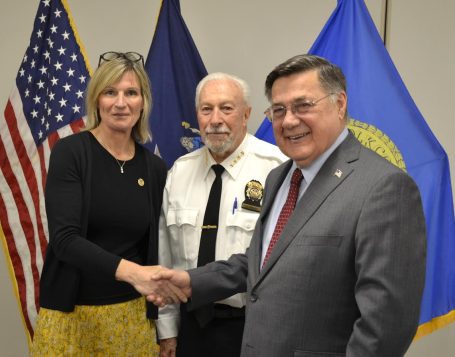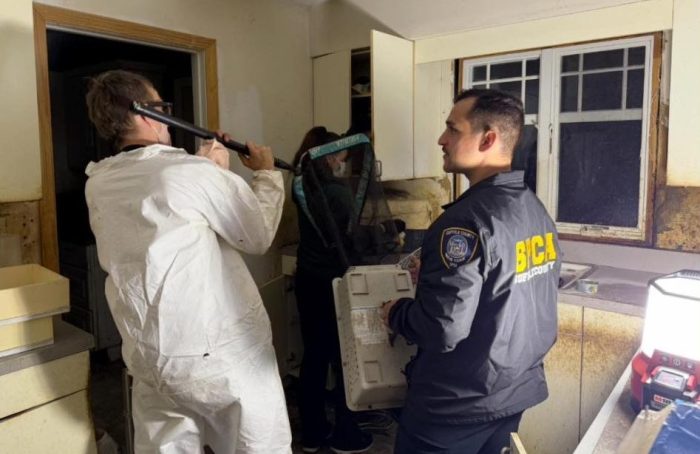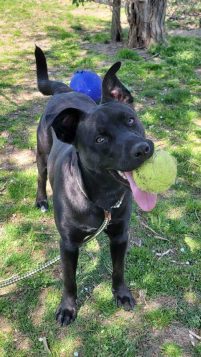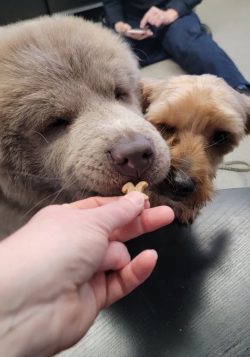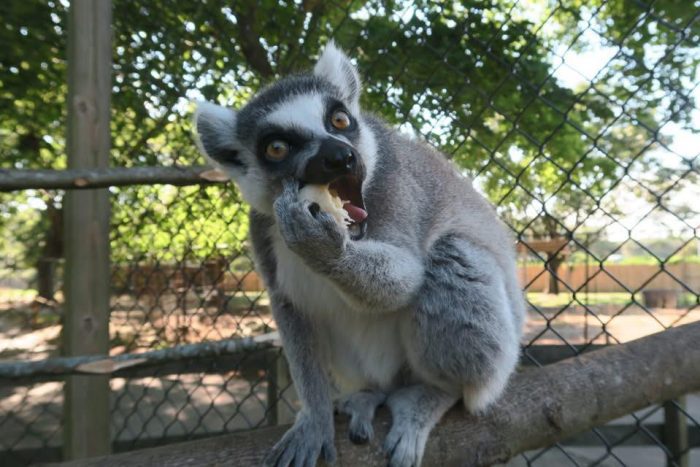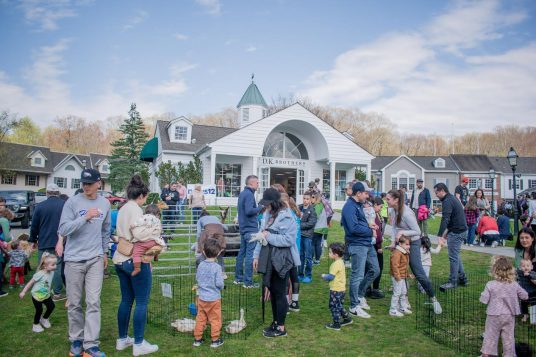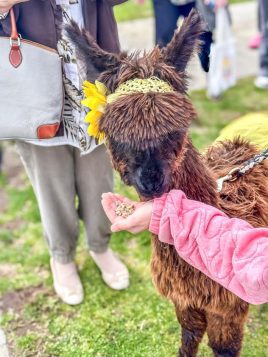 Welcome to the 41st edition of Paw Prints, a monthly column for animal lovers dedicated to helping shelter pets find their furever home
Welcome to the 41st edition of Paw Prints, a monthly column for animal lovers dedicated to helping shelter pets find their furever home

Meet Penny
“Penny Lane is in my ears and in my eyes, there beneath the blue suburban skies.” A song that captures the beauty in the ordinary and turns it into something extraordinary is a fitting tribute for this nine year old Shepherd mix.
Penny first arrived at Little Shelter via the Passage to Freedom Program from far away Azerbaijan. Adopted soon after, she was living a happy life until she suddenly lost her family and found herself back at the beginning. Enjoying long walks, ear scratches, and good conversation, this bright, shiny Penny is hoping to get a second chance. Finding a Penny brings good luck…this one is as close as your nearest shelter! 631-368-8770

Meet Roo
“Good morning from me — Roo!
I’m just sitting here in the sunshine, waiting and wishing for my forever home. I’m Roo, a 1-year-old mixed breed girl with big ears, a happy heart, and the sweetest soul you’ll ever meet. I weigh about 40 pounds, which means I’m the perfect size for cuddling, car rides, and couch time (if you’re into that—because I sure am!).
I love going on walks, making new friends, and showing off my good leash manners. I may be young, but I’ve got a calm, gentle way about me that makes people smile. Just look into my eyes—you’ll see!
If you think we might be a perfect match, call Kent Animal Shelter for more information. I’m here patiently waiting, hoping today is the day someone chooses me.” 631-727-5731

Meet Sally
Sally is a 5-year-old goldendoodle mix who came to the Brookhaven Animal Shelter as a stray, but she hasn’t let her past dim her bright and loving spirit. This sweet girl is bursting with energy and affection! Sally thrives on activity and would love a family who enjoys walks, playtime, and plenty of outdoor adventures. She seems to be very dog friendly, but further testing will be done once she is spayed.
Sally hasn’t had much training in her life, so she’s still learning not to jump up and is working on her leash manners—she can be strong! She’ll need a family who’s patient and committed to helping her grow with some basic obedience training.
Because of her energy and strength, Sally would do best in a home with children aged 14 and up. She’s the kind of pup who’ll match your enthusiasm for life, and she’s ready to be your loyal sidekick for all the fun ahead. Fill out a Matchmaker Application at https://www.brookhavenny.gov/152/Animal-Shelter to meet her in person! 631-451-6955

Meet Bronco
This sweet boy was abandoned at a local park last August and is still waiting at the Smithtown Animal Shelter for his forever home. Estimated to be around 5 years old, this brindle and white bully mix weighs in at 65 pounds. A true gentleman, Bronco’s favorite pastimes include carrying around his stuffies and going for car rides that end with pup cups! He enjoys kids and all adults and is indifferent to other animals. Bronco deserves his happily ever after. Will that be with you? 631-360-7575
————————————————-
Free rabies vaccination clinic
Save the date! The Suffolk County Department of Health Services in conjunction with the Town of Brookhaven will offer free rabies vaccinations for dogs, cats and ferrets on Saturday, May 31, from 9 a.m. to 1 p.m. at the Brookhaven Animal Shelter located at 300 Horseblock Road in Brookhaven. Although the clinic is available to all county residents, the quantity of vaccine is limited and available only while supplies last. All dogs must be on leashes and all cats and ferrets must be in carriers.
New York State and Suffolk County laws require that all dogs, cats, and ferrets be vaccinated against rabies. Vaccinating pets not only provides protection for the animals but also acts as a barrier to keep the rabies virus from spreading between wild animals and people.
“Take the time to protect your beloved pets against rabies. They give us so much joy and love and deserve to be kept safe,” said County Executive Ed Romaine. For more information, call 631-451-6950.
Rescue is a lifestyle. Adopt, don’t shop.
Check out the next Paw Prints in the issue of June 12.
Paw Prints is generously sponsored by Mark T. Freeley, Esq.





